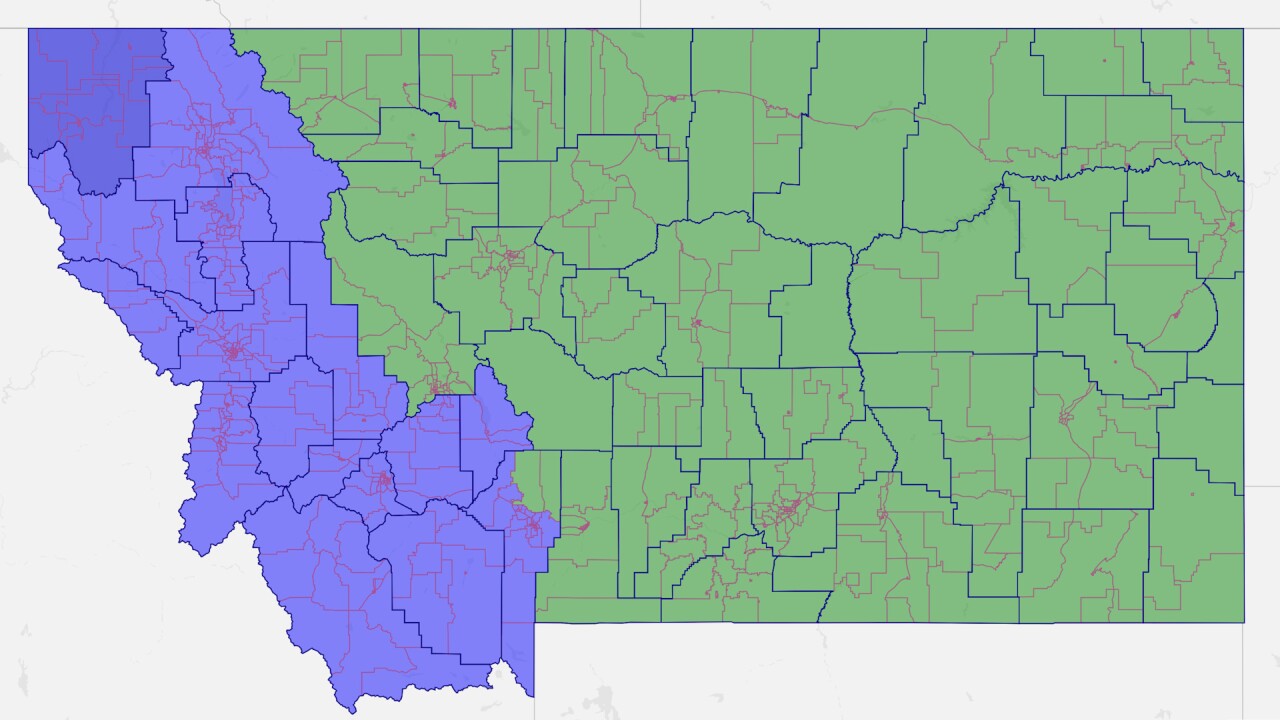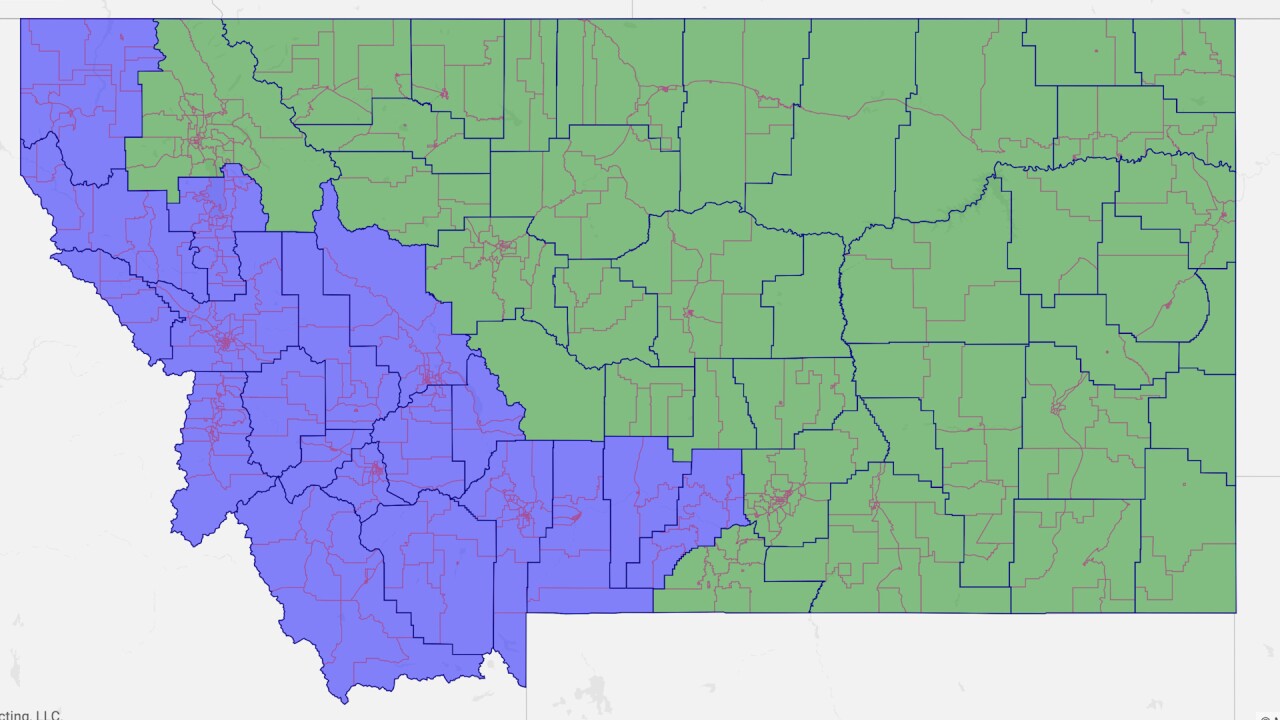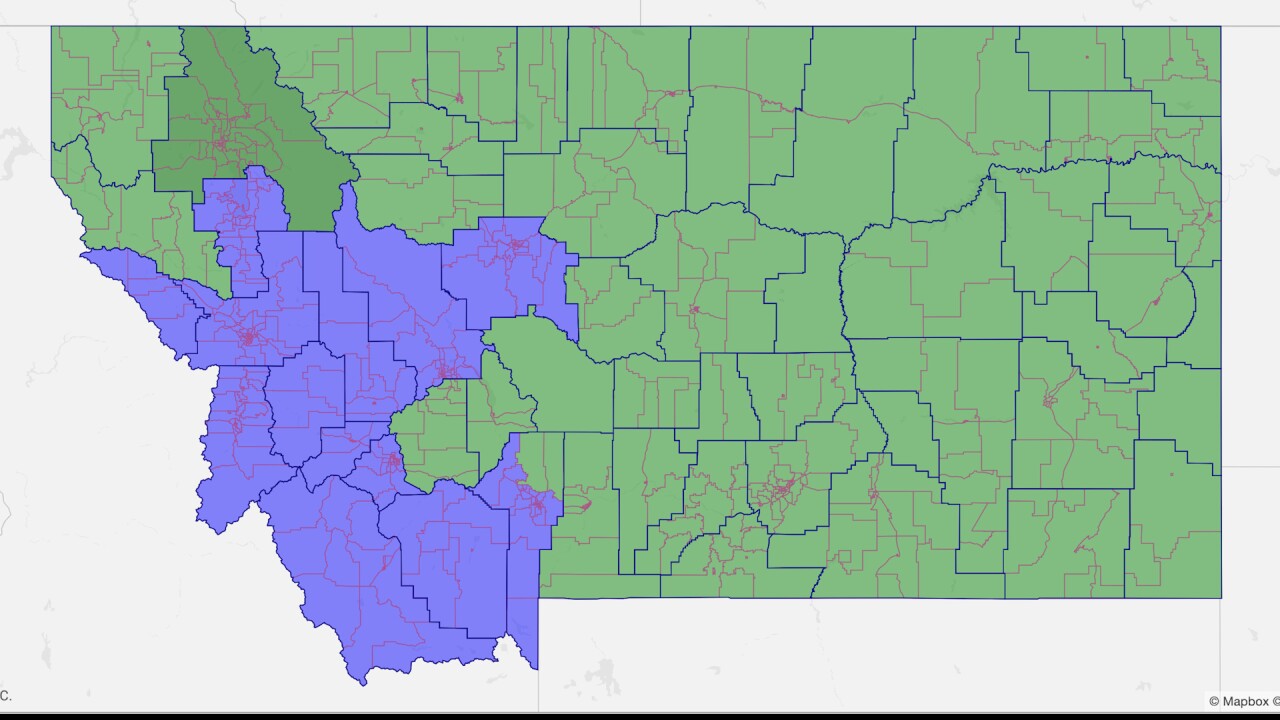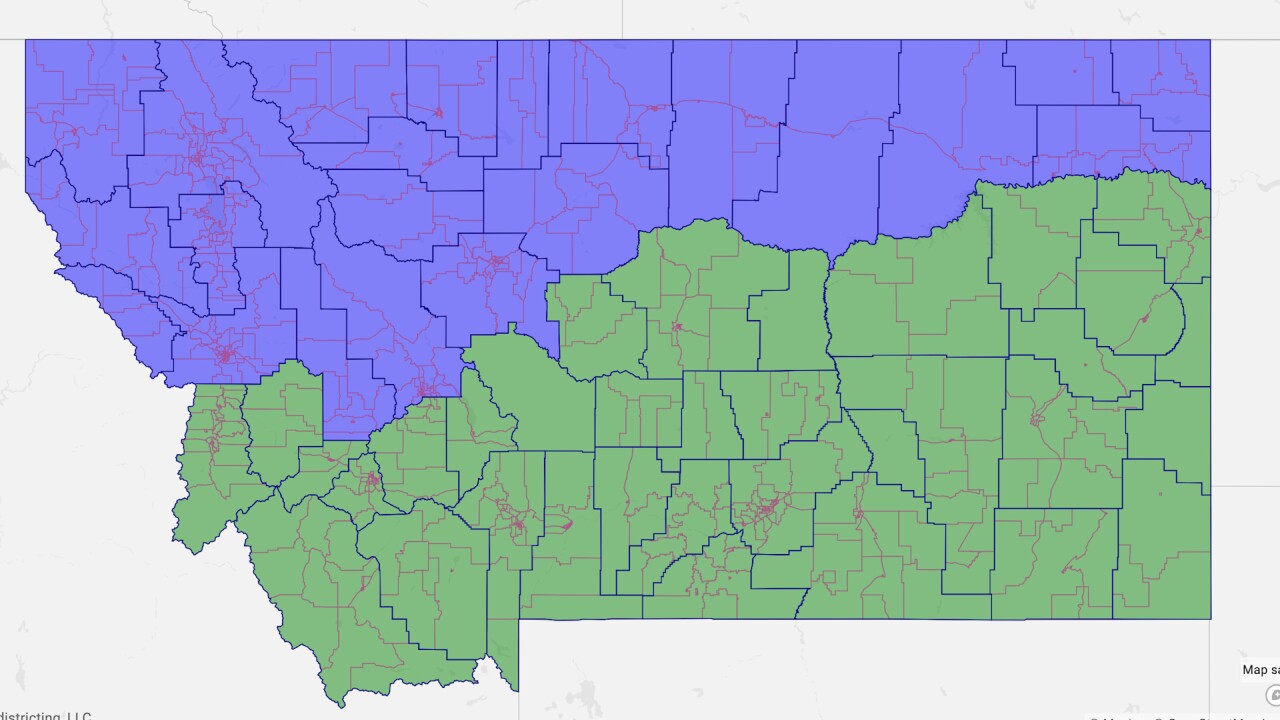HELENA — Drawing two new, compact congressional districts for Montana in 2022 with equal populations is a piece of cake – but, when their political leaning is a consideration, things get prickly.
Joe Lamson, one of two Democratic members of the five-member commission that will decide the boundary by November, says a goal should be to create one “competitive” district – where a Democratic and Republican candidate each have a legitimate chance to win.
“When we held public hearings, we heard loud and strong from Montanans that when it came to congressional districts, they would like one of those districts to be competitive,” he told MTN News last week.

Yet Dan Stusek, one of two GOP members of the Districting and Apportionment Commission, says the politics of the districts should not be a priority.
“That is not one of the commission’s mandatory criteria, nor is it in our Montana constitution or state law,” he said last week. “The concept of `competitiveness’ inherently requires us to look at political data, which the public well knows is what people use to gerrymander districts.”
The commission has two Republican members, two Democratic members and a non-partisan chair appointed by the Montana Supreme Court: Maylinn Smith, an attorney for the Confederated Salish and Kootenai Tribes.

Members of the public are submitting proposed district maps now to the commission, which will choose several “finalist” plans Oct. 5. It then will hold public hearings on those proposals and vote Oct. 30 on which plan to adopt.
But it’s no secret what the general types of plans will be, and MTN News, using online tools, drew up several possibilities – complete with a political analysis.
What we found is if the state is divided into an “east” and “west” district, with a relatively straight line that divides by population, both districts tend to lean Republican.

For example, in a western district that includes Missoula, Kalispell, Butte and Bozeman, but excludes Helena and a couple of precincts in Gallatin County, about 46 percent of its voters lean Democratic and 51.7 percent lean Republican, according to the website Dan’s Redistricting.
The eastern district, which would include Great Falls, Helena, Billings and most of the eastern two-thirds of the state, would be strongly Republican, with almost 59 percent of its voters GOP and just 38.6 percent leaning Democratic.

Most other east-west splits we examined don’t do much better for Democrats in the western district.
Perhaps the only configuration that would create a district close to even between the two parties is a “southwestern” district, which would place Kalispell and/or other parts of northwestern Montana into the eastern district.
For example, a western district that includes Missoula, Butte, Helena, Bozeman and Livingston, but not Kalispell or Flathead County, has about 48 percent of its voters leaning Democratic and 50 percent leaning Republican.

To make that district lean a bit more Democratic, one could add Great Falls and remove Lincoln and Sanders counties in northwestern Montana and also several counties in south-central Montana, such as Park, Stillwater and Sweet Grass. That new district would have almost 50 percent of its voters leaning Democratic and 48 percent leaning Republican.

In both cases, the eastern/northwestern Montana district would be heavily Republican.
Lamson confirmed that these latter two proposals are ones that some Democrats are considering.
Lamson noted that if either of these proposals are adopted, the new southwestern district would be far from a slam-dunk for Democrats.
“I assure you, this is not going to be a deep, dark blue district,” he said. “It’s going to be a competitive district; that means it’s going to be 50-50, and then the voters will decide which candidate they want to have represent them in Congress.”
Lamson says it’s a foregone conclusion that one of Montana’s new districts, covering most of eastern Montana, will be strongly Republican.
He says he and his fellow Democratic commissioner, Kendra Miller, believe that Montanans would like the other district to give candidates from each party a legitimate chance to win it.
If both districts solidly favor Republicans, then the election for the seat essentially takes place in the Republican primary, Lamson says.
“You’ve disenfranchised both Republicans and Democrats in the general election, because the decision was already made in the primary by a much smaller sub-group of the voters,” he says.
Stusek, however, indicated that he and his fellow Republican commissioner, Jeff Essmann, won’t be supportive of a plan that places Flathead County or other parts of Republican-leaning northwest Montana into the eastern district.
“If you ask the people in northwest Montana what they thought of that map, they would certainly feel that was inappropriate and didn’t make sense,” he says. “I think that would sacrifice the elements of compactness and would inherently be a kind of gerrymandering, and much different from what Montana has historically seen in our congressional districts.”
Stusek says he’s waiting to see what type of maps people submit, before making a judgment – but, he says compact, contiguous districts are what he’s looking for.

Another possibility examined by MTN News is a “north” and “south” district.
The north district would include Kalispell, Missoula, Helena, Great Falls and the Hi-Line counties. The south district would include Butte, Bozeman, Hamilton, Billings, Lewistown, Miles City and Sidney.
Both of these districts would lean Republican. The north district would have 53 percent of its voter leaning Republican, while the south district would have 57 percent Republican. The north would have about 45 percent of its voters leaning Democrats, while the south would be just 40 percent Democratic.





